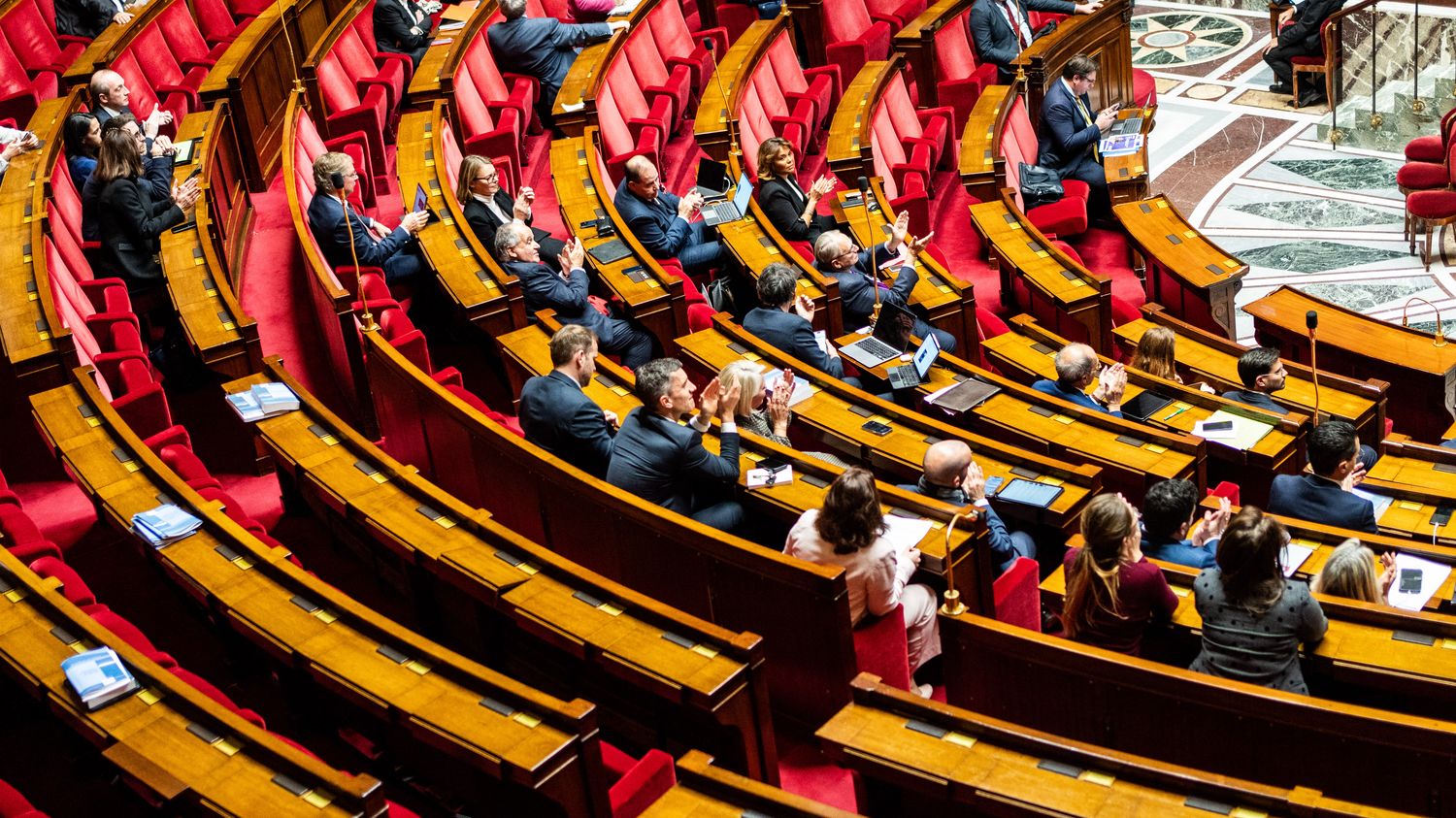The share of women among candidates for the early legislative elections has fallen compared to the previous election in 2022, among almost all political parties.
Published
Reading time: 3 min

The count is not there: of the 4,009 candidates in the legislative elections of June 30 and July 7, only 41.1% are women. This election, organized in haste, will therefore not have favored the feminization of parliamentary life. The presence of women in the National Assembly risks being reduced, even though they represented only 37.3% of the outgoing chamber, a figure already down compared to 2017.
However, since June 6, 2000, a law provides for a financial sanction for groups which do not present 50% of candidates of each sex in the legislative elections, recalls the Vie publique site. Overview, party by party.
According to the candidate typology established by franceinfo, only La France insoumise has almost achieved parity. The party has in fact invested 116 women for 117 men. Conversely, it is among the members of the Republicans who followed Eric Ciotti in his alliance with the RN that women are least represented, with 11 women candidates for 52 men.
Among the poor performers in terms of parity are also Les Républicains, who have only invested a third of women. On the presidential camp side, the imbalance is a little less marked, with 43.5% of women candidates. Then there is Reconquête, Eric Zemmour’s party, which has 44.5% of women candidates.
The allied parties within the New Popular Front are doing a little better overall, even if the balance is not achieved. Within the Socialist Party and the Ecologists-EELV, there are still more men than women, with 45.3% and 46.7% of female candidates respectively. The disproportion is also slightly more marked than in the National Rally, where the candidates are 47.6% women. The French Communist Party is, for its part, quite close to parity, with 26 men for 24 women.
In total, in 2024, women will represent only 41.1% of the 4,009 candidates. This is three points less than in 2022, when they made up 44% of aspiring MPs.
By no longer taking into account the parties but the political blocs, the left alliance remains the least far from the parity objective, even if the share of women falls by three points in two years, to fall to 47.9%. while Nupes had managed to achieve parity in 2022 (with 50.8% women).
Among the Republicans, the place given to female candidates continues to decline: they already constituted only 35.5% of the candidates in 2022, they now represent only 32.8% in 2024.
Despite the initial promises of Emmanuel Macron’s movement, it is in the presidential camp that the number of candidates is falling the most. From 48.5% of applications in 2022, women now represent only 43.5%.
This decline in female candidates will have consequences on the wallets of political parties. Indeed, while there is no obligation of parity imposed on parties for legislative elections, financial sanctions have been put in place to encourage them to be more representative. Their public aid will thus be reduced proportionally, as provided for in the law adopted in 2000. Only parties eligible for this public aid are penalized, paid each year by the State to movements having received at least 1% of the votes in 50 constituencies in the first round of the legislative elections, and proportional to the votes recorded.
LR thus lost nearly 1.3 million euros per year in 2023 and 2024, for having presented only 38% of female candidates in the 2022 legislative elections. This is the largest financial penalty inflicted on a party for lack of of parity. But it does not seem dissuasive, as the Republicans continue to nominate mainly men.
Since the entry into force of this law, the Assembly has never achieved parity, but has become more feminized in each election, with the exception of a decline in 2022. The hemicycle had 12.3% of female deputies in 2002, compared to 38.8% in 2017, a historic record, then 37.3% in 2022. If the number of female candidates is decreasing, it is still too early to say whether this will translate mechanically into the hemicycle at the end of the second round.
